Discover the reasons behind a poorly flushing toilet and learn practical solutions to restore its…
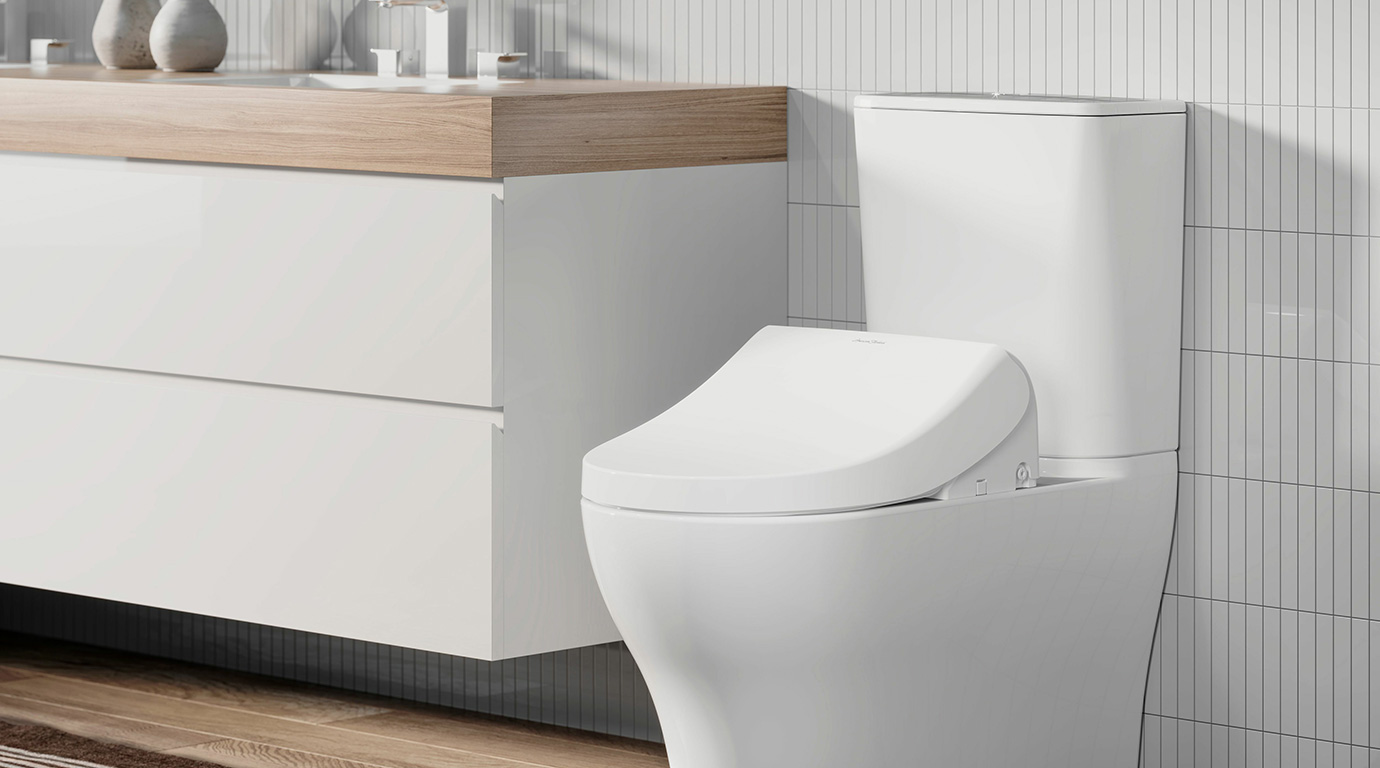
How to Replace a Toilet: A Step-by-Step Guide
Don’t flush away your money on a plumber! Learn how to replace a toilet yourself with this comprehensive guide.
Replacing a toilet may seem like a daunting task, but with a little know-how and some basic tools, you can tackle this home improvement project like a pro. Not only will you save money on hiring a plumber, but you’ll also gain a sense of satisfaction from completing the job on your own. In this step-by-step guide, I’ll walk you through the process of replacing a toilet, tailored specifically for our Australian readers. So grab your tools and let’s get started!
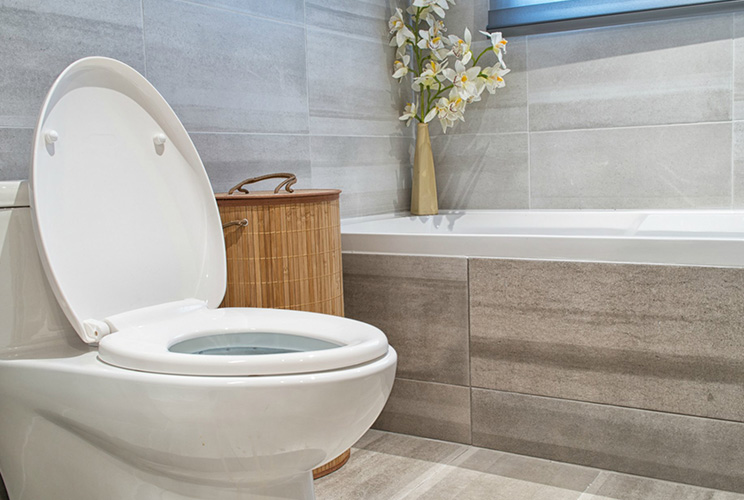
Assessing the Situation: Is it Time to Replace?
Before diving into the replacement process, it’s important to determine whether your toilet actually needs replacing. Here are a few signs that indicate it might be time for an upgrade:
- Frequent leaks: If you notice water [meaning word=”Pooling”] around the base of your toilet or discover recurring leaks, it may be a sign of a cracked or worn-out toilet.
- Constant repairs: Are you spending more time fixing your toilet than actually using it? Frequent repairs can be a hassle and a drain on your wallet.
- Always Running: We have all head the jokes about a fridge running. A toilet that is always running is a huge waste of water.
- Outdated design: If your toilet is outdated and clashes with your bathroom decor, replacing it can give your bathroom a fresh, modern look.
- Water inefficiency: Older toilets often use more water per flush, contributing to higher water bills. Upgrading to a newer, more efficient model can save you money in the long run.
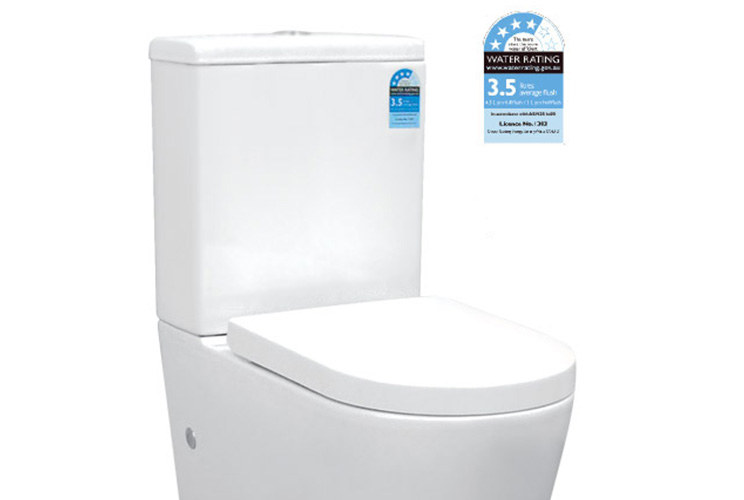
If any of these signs sound familiar, it’s time to say goodbye to your old toilet and welcome a new one.
Gather Your Tools and Supplies
Before embarking on your toilet replacement journey, make sure you have the following tools and supplies ready:
- New toilet: Choose a toilet that suits your needs, taking into account factors such as water efficiency, comfort, and style. Ensure it complies with Australian standards for water-saving features.
- Adjustable wrench: This versatile tool will help you loosen and tighten nuts and bolts.
- Screwdriver: Both a flathead and a Phillips screwdriver will come in handy during the installation process.
- Plunger: You never know when you might need it, so keep a plunger nearby just in case.
- Bucket and sponge: These will be useful for draining any remaining water from the old toilet and cleaning up spills.
- Gloves and safety glasses: Protect yourself from potential germs and debris with gloves and safety glasses.
Once you have all the necessary tools and supplies, you’re ready to roll up your sleeves and start the replacement process.
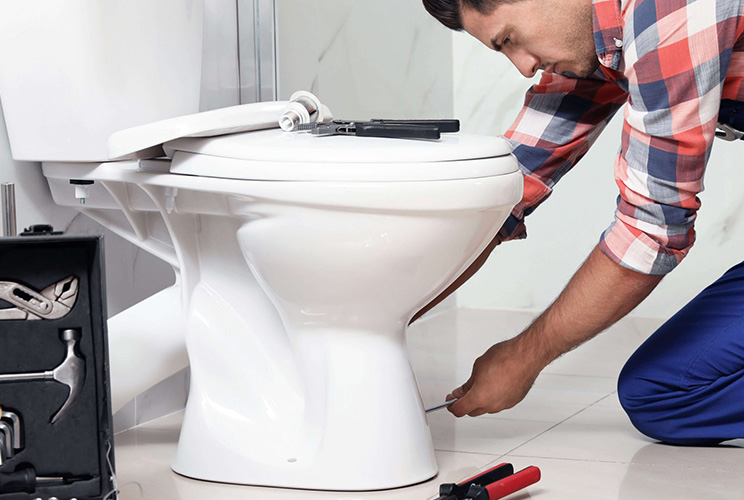
Step 1: Turn Off the Water Supply
Safety first! Before doing anything else, locate the water shut-off valve near the base of your toilet and turn it clockwise to stop the water flow. Flush the toilet to drain any remaining water from the tank and bowl.

Step 2: Remove the Old Toilet
Removing the old toilet is a crucial step in the replacement process. Follow these steps to do it properly:
- Disconnect the water supply line: Use an adjustable wrench to loosen the nut connecting the water supply line to the bottom of the toilet tank. Once loose, remove the nut and gently pull the line away.
- Remove the tank: Unscrew the bolts securing the toilet tank to the bowl. You may need a wrench to hold the bolt in place while unscrewing the nut from inside the tank. Lift the tank off the bowl and set it aside.
- Detach the bowl: Loosen the bolts at the base of the toilet bowl. Again, you might need a wrench to hold the bolts while unscrewing the nuts from underneath. Carefully lift the bowl straight up to detach it from the floor. Be cautious as it can be heavy.
- Clean the old wax ring: Scrape off the old wax ring from the floor flange, ensuring a clean surface for the new installation.
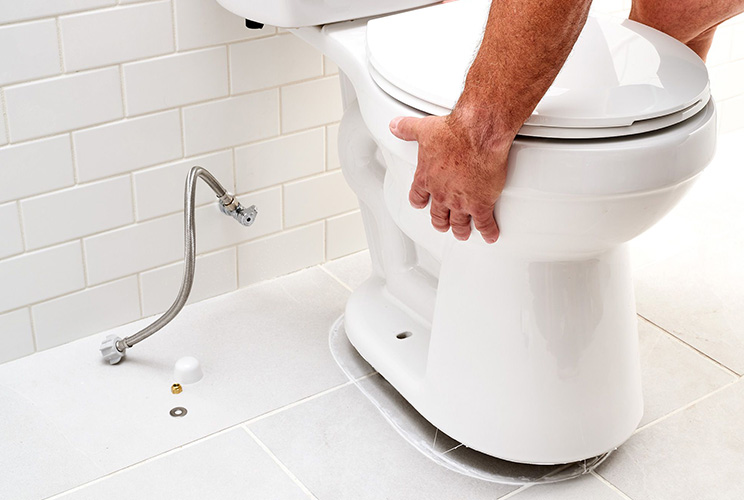
Step 3: Prepare for the New Toilet
With the old toilet out of the way, it’s time to prepare for the installation of the new one. Follow these steps:
- Inspect the floor flange: Make sure the floor flange, which connects the toilet to the sewer pipe, is in good condition. Replace it if damaged or broken.
- Install a new wax or foam ring: Place a new wax/foam ring onto the flange, ensuring it is centered and seated properly. Note: There’s two types of Pan Seals. A standard Toilet Pan Seal with a wax seal and a wax-free Pan Seal.
- Attach the new tank: Position the tank onto the bowl and secure it with the provided bolts and nuts. Don’t overtighten, as it may cause damage.
- Attach the water supply line: Reconnect the water supply line to the bottom of the toilet tank, ensuring it is tightly secured.
Read about WaterMark technical specifications in the Australian Building Codes Board to find more information regarding requirements for injected moulded offset
pan connectors here.
Related: Wax vs Rubber Toilet Pan Seals: Which is the Better Choice?
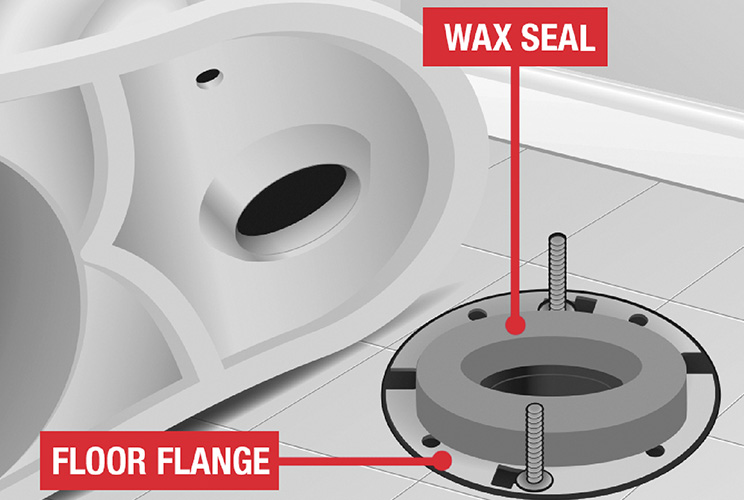
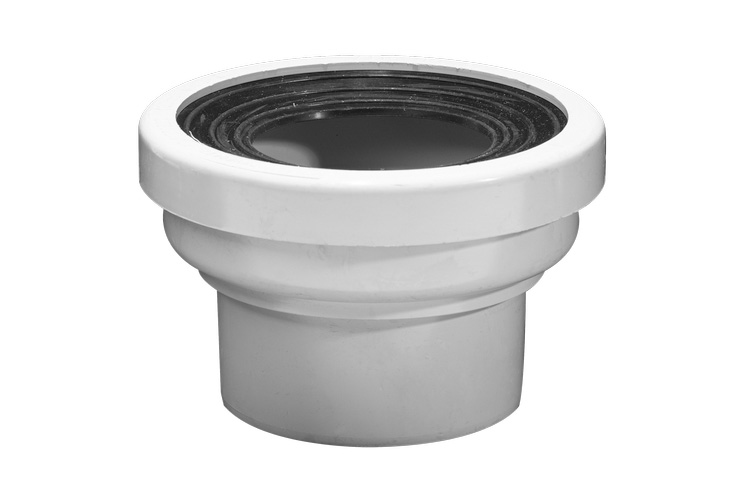
Step 4: Install the New Toilet
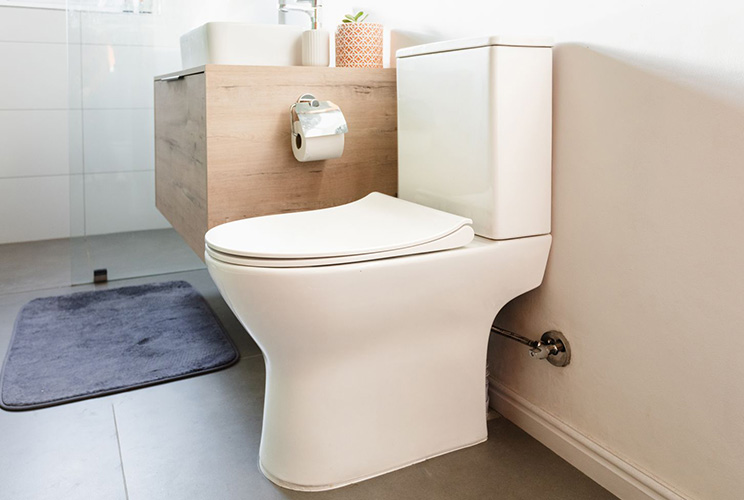
Now comes the exciting part—installing the new toilet. Follow these steps:
- Position the bowl: Carefully lower the bowl onto the wax ring, aligning it with the floor bolts.
- Secure the bowl: Place washers and nuts onto the floor bolts and tighten them, alternating between sides, until the bowl is stable. Be careful not to overtighten and crack the toilet.
- Attach the tank lid and seat: Place the lid onto the tank and attach the toilet seat according to the manufacturer’s instructions.
- Turn on the water supply: Slowly turn the water shut-off valve counterclockwise to restore the water supply.
- Check for leaks: Flush the toilet and inspect for any signs of leaks. Tighten connections if necessary.
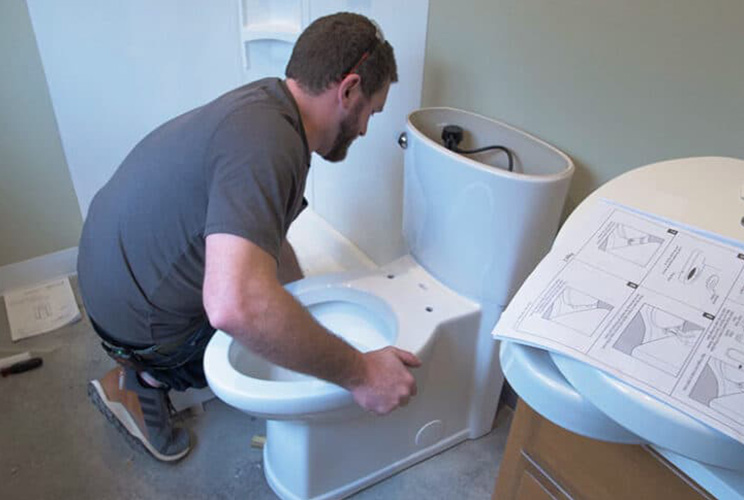
Step 5: Celebrate Your Success!
Congratulations! You’ve successfully replaced your toilet like a true DIY champ. Take a moment to admire your handiwork and revel in the fact that you’ve saved yourself money while gaining valuable home improvement skills.
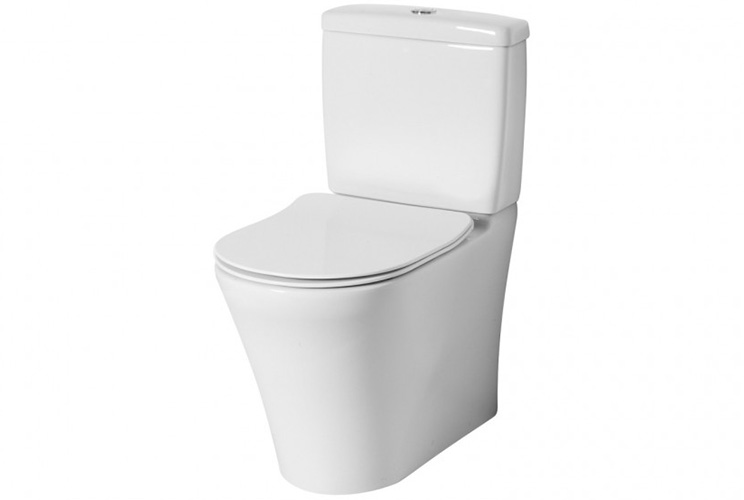
Risks of DIY Toilet Replacement
While replacing a toilet yourself can be a rewarding experience, it’s important to be aware of the potential risks involved. Here are some risks to consider before undertaking a DIY toilet replacement:
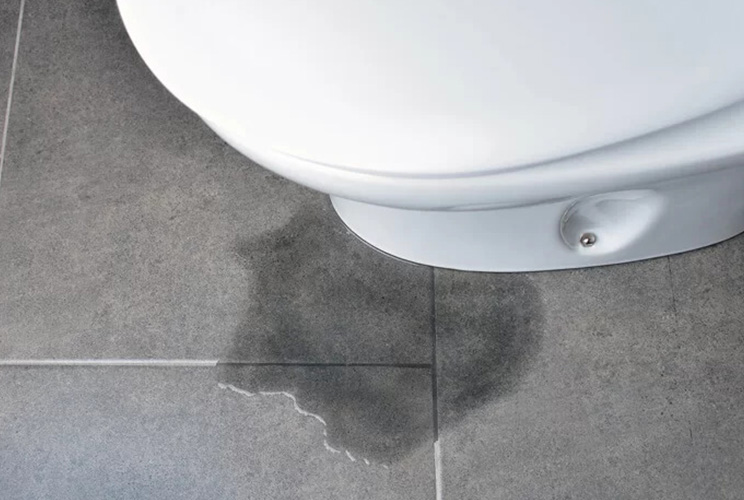
Plumbing Complications
Plumbing systems can be complex, and without proper knowledge and experience, you may inadvertently encounter complications during the replacement process. Issues such as hidden leaks, corroded pipes, or incorrect fittings can lead to further damage and costly repairs. A professional plumber has the expertise to identify and address these complications, ensuring a smooth and trouble-free installation.
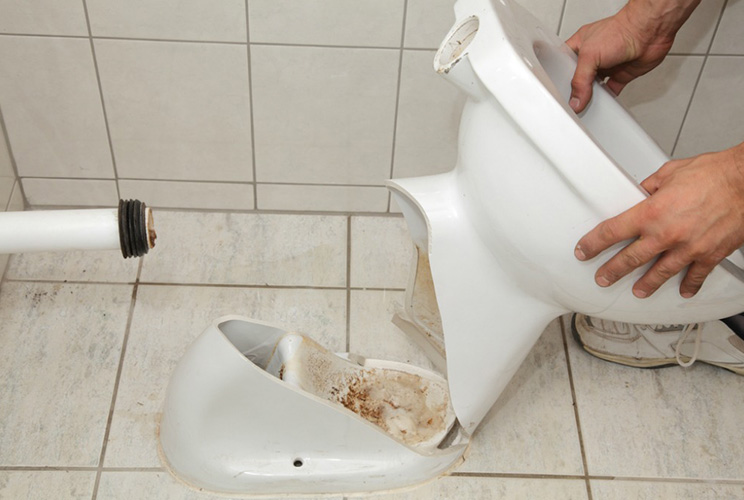
Improper Installation
Installing a toilet requires precision and attention to detail. If the new toilet is not installed correctly, it can result in leaks, inefficient flushing, or an unstable fixture. Improper installation can also cause damage to the flooring or the surrounding bathroom fixtures. Leaking waste water has the potential to create more damage than just a smelly toilet. Professional plumbers have the necessary skills to ensure a proper installation, minimizing the risk of such problems.
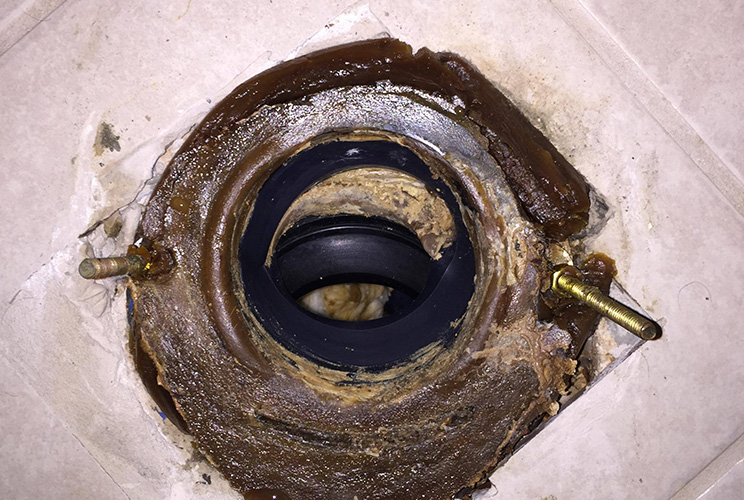
Warranty Considerations
When you hire a professional plumber to replace your toilet, they typically provide a warranty for their work. This means that if any issues arise after the installation, they will rectify them at no additional cost. However, if you choose to perform the replacement yourself and encounter problems later on, you may be responsible for the expenses of fixing or replacing the toilet.
Homeowners and renovators are protected from faulty building and plumbing work by insurance held by the builder or plumber. – VBA
Personal Safety
DIY toilet replacement involves working with tools, handling heavy objects, and potentially dealing with water and electrical connections. Without proper precautions and experience, there is a risk of personal injury. Professional plumbers are trained to work safely and have the necessary equipment to protect themselves from potential hazards.
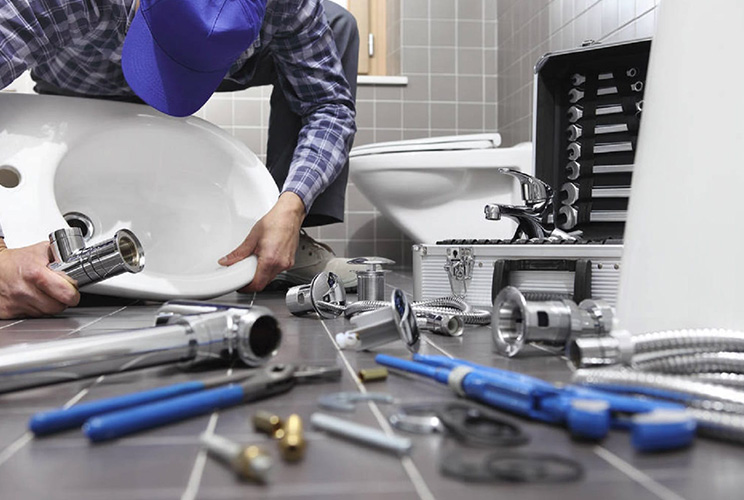
Time and Effort
Replacing a toilet may seem like a straightforward task, but it can be time-consuming, especially if you’re not familiar with the process. DIY projects often take longer than anticipated, and this can disrupt your daily routine. Additionally, you may need to make multiple trips to the hardware store if you encounter unexpected challenges or realise you lack certain tools or materials.
Lack of Knowledge and Experience
Even with a comprehensive step-by-step guide, performing a toilet replacement without prior knowledge or experience can be challenging. You may encounter unfamiliar terms, encounter unexpected situations, or make mistakes that could have been avoided with professional guidance. A professional plumber has the training and expertise to handle any complications that may arise during the replacement process.
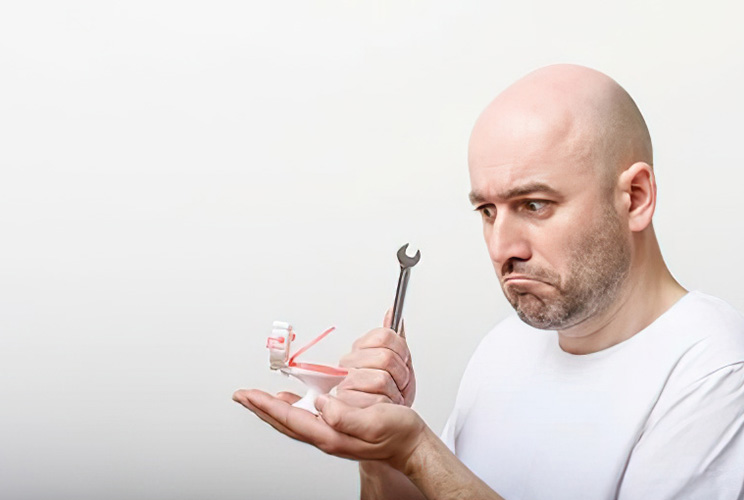
Is it Really Cost Saving?
While DIY toilet replacement can be a cost-saving and rewarding endeavor, it’s crucial to be aware of the risks involved. Plumbing complications, improper installation, warranty considerations, personal safety hazards, time and effort required, and lack of knowledge and experience are all factors to consider before deciding to replace a toilet yourself. If you’re unsure about your abilities or encounter any difficulties along the way, it’s advisable to seek the expertise of a professional plumber. They can ensure a safe and efficient installation, giving you peace of mind and saving you potential headaches and expenses in the long run.

Engaging a Plumber
Replacing a toilet may seem intimidating, but with the right guidance and a can-do attitude, it’s a manageable task for any Australian homeowner. By following this step-by-step guide, you can confidently replace your toilet and enjoy the benefits of a modern, water-efficient fixture in your bathroom. Remember, safety should always be a priority, so don’t hesitate to seek professional help if you’re unsure or encounter any unexpected challenges. If you opt to hire a plumber, make sure it is a registered or licensed plumber.
Make sure you engage a licensed or registered plumber when you want plumbing work carried out. – Victorian Building Authority
We hope this article will give you better understanding on what’s involved in replacing a toilet, the pros, cons and risks involved, as well as the benefits of hiring a professional plumber.
Happy plumbing!
Is it worth replacing an old toilet?
Before replacing your toilet, consider these signs: frequent leaks, constant repairs, always running water, outdated design, and water inefficiency. Upgrading can save money, improve aesthetics, and eliminate the hassle of repairs.
Can I replace my toilet myself?
Replacing a toilet can be manageable with the right guidance. Follow this step-by-step guide for a successful replacement. Prioritize safety and seek professional help if needed. Hiring a registered plumber ensures expertise and avoids complications.
How easy is it to replace a toilet?
Installing a toilet demands precision and attention to avoid leaks, inefficient flushing, or instability. Improper installation can damage flooring and surrounding fixtures. Professional plumbers possess the skills needed for a proper installation, reducing the risk of such issues and the potential damage caused by leaking waste water.
Do I need a plumber to fit a new toilet?
Replacing a toilet without prior knowledge can be challenging. A professional plumber's expertise can prevent mistakes and handle unexpected situations. Gather essential tools: a new toilet, adjustable wrench, screwdriver, plunger, bucket, sponge, gloves, and safety glasses. With everything ready, you're prepared to start the replacement process.

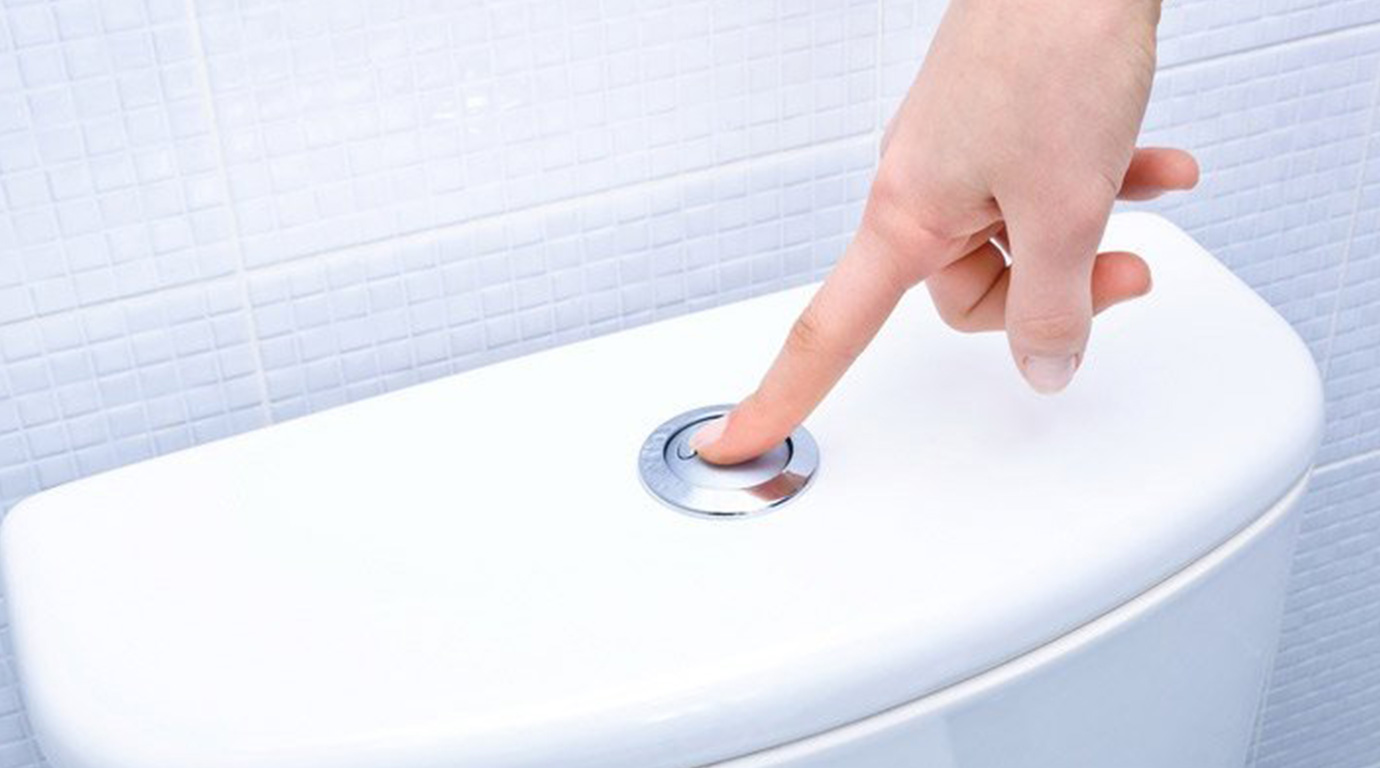
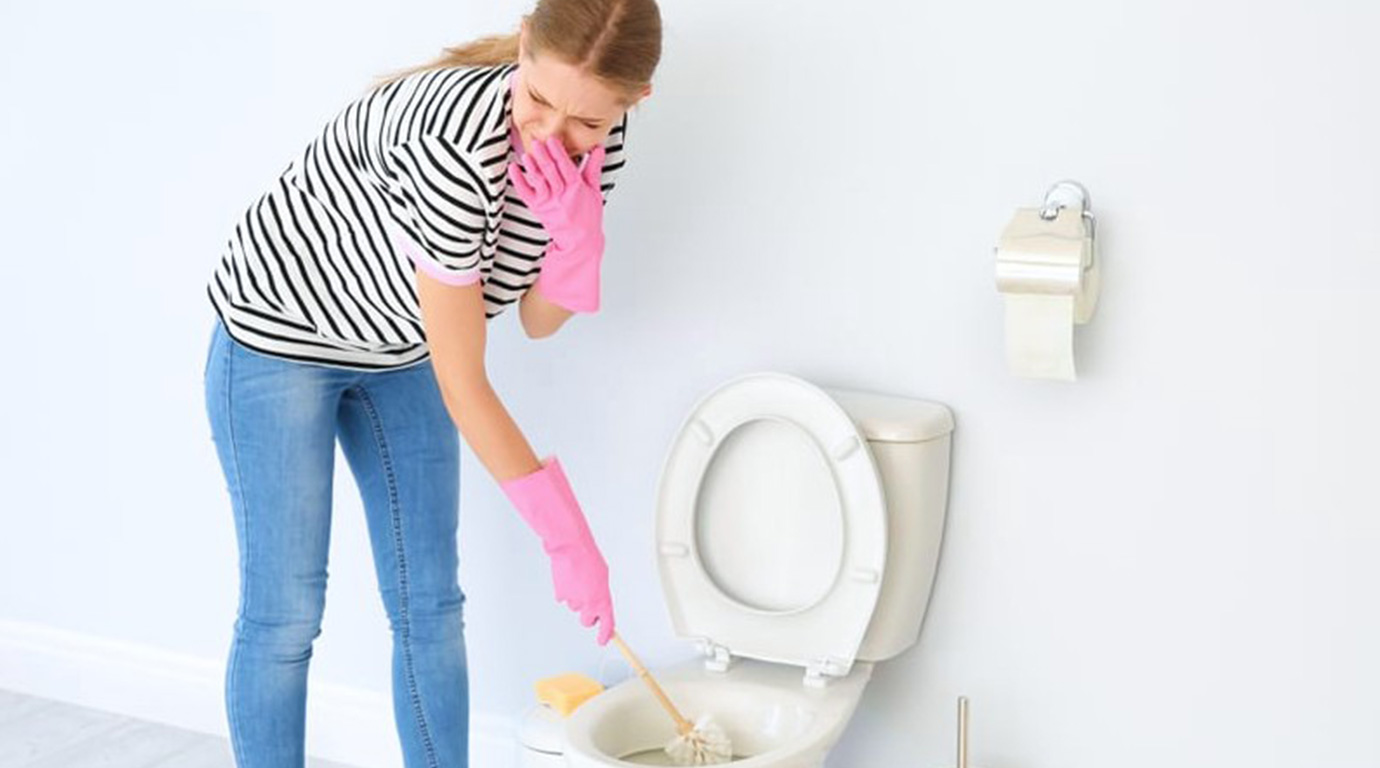
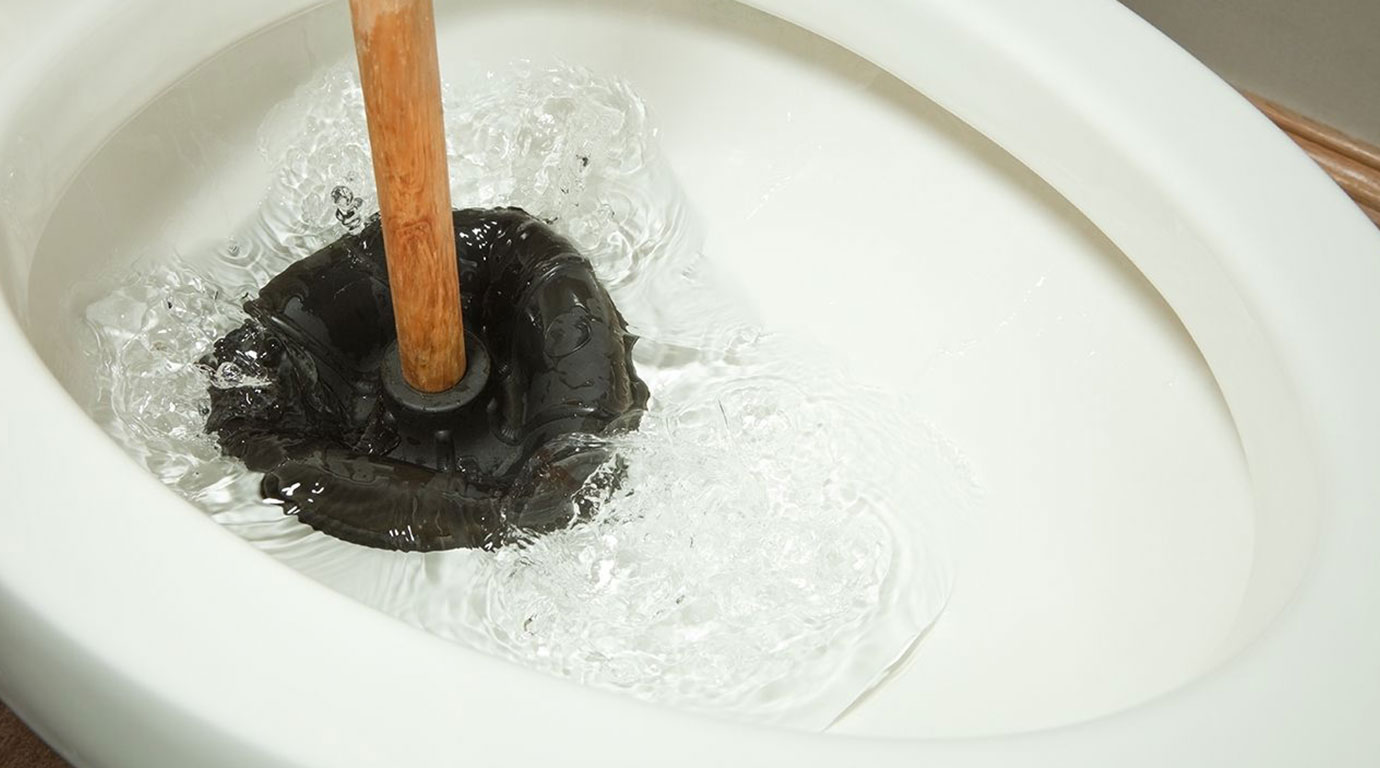
This Post Has 0 Comments